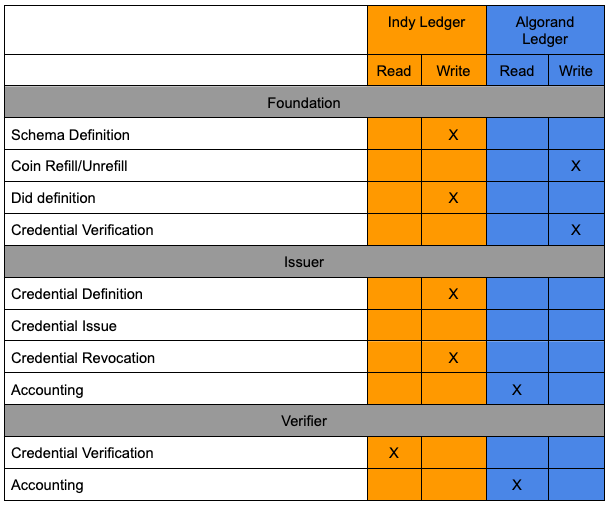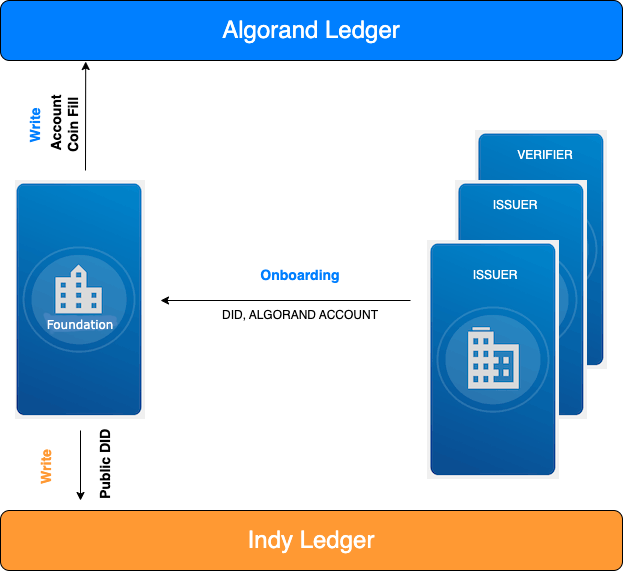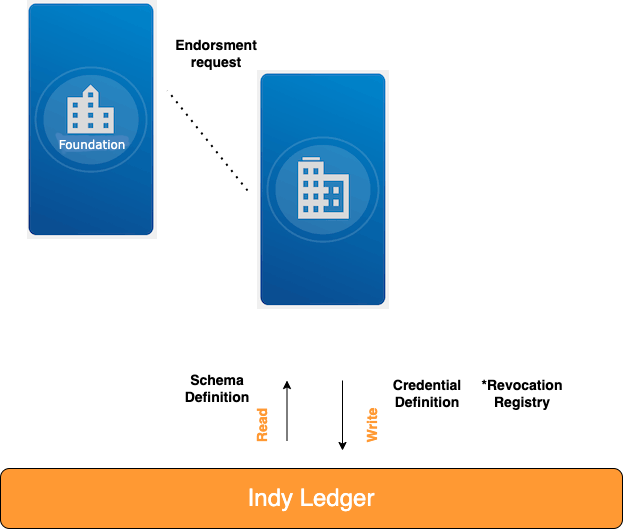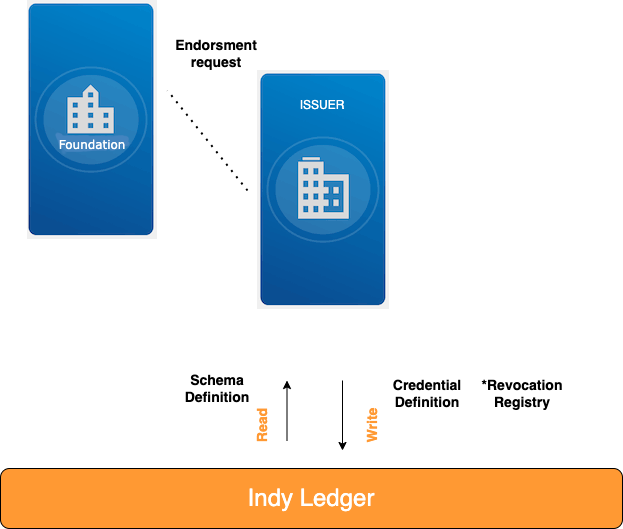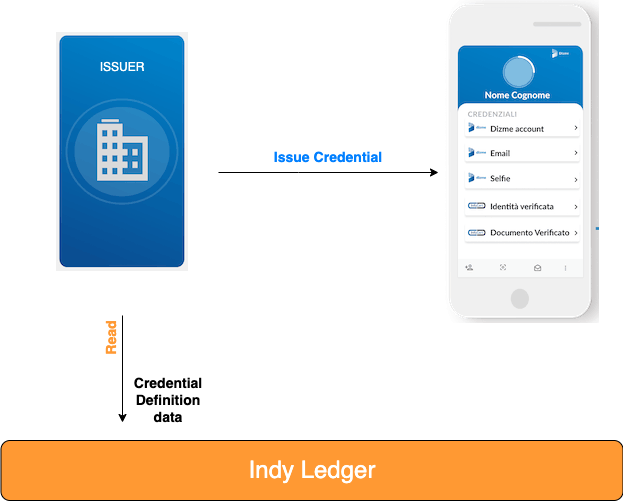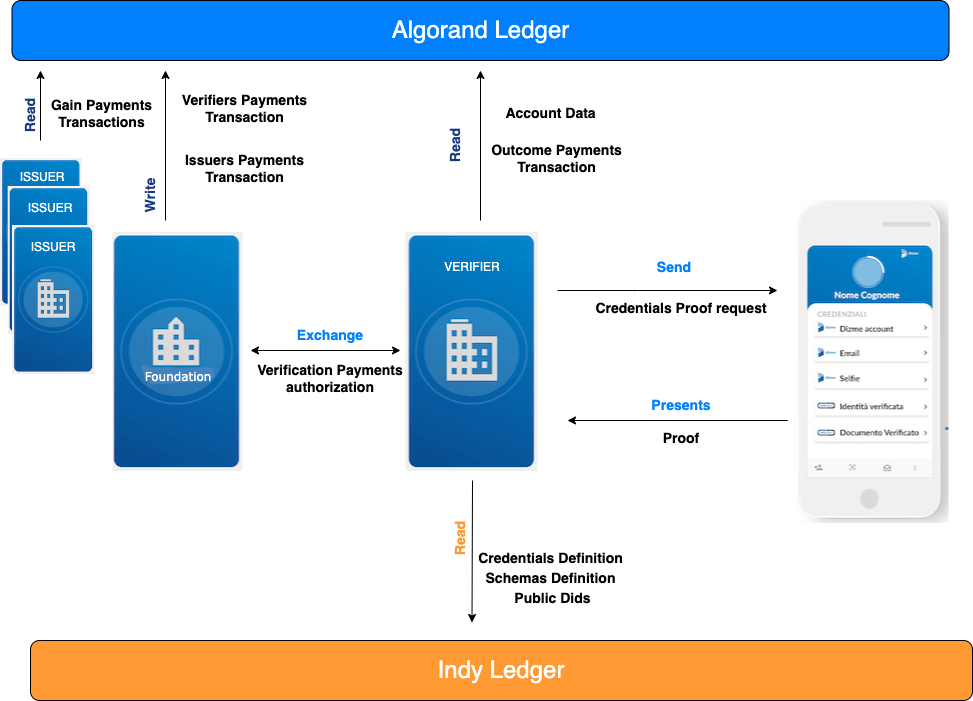Ledger interactions
Introduction
The Dizme Stack is semantically structured into three core components: Foundation, Issuer, and Verifier. This documentation provides an overview of the data model within the Dizme Self-Sovereign Identity (SSI) framework, detailing key processes and interactions with specific target on what goes on ledgers.
Issuer/Verifier OnBoarding
DID Definition
The foundation of the Dizme SSI data model is the creation of a Decentralized Identifier (DID) for an issuer/verifier organization. This process involves establishing the organization's DID on a Indy ledger and configuring the necessary permissions.
Accounting on Algorand Blockchain
The accounting aspect of the Dizme Stack is implemented using the Algorand Blockchain, involving the following interactions:
-
Upon the publication of a DID by the foundation, an Algorand Account is linked to it. The foundation retains the ability to replenish or withdraw funds from this account based on business requests.
-
Currently, the only cost incurred is during the verification process. When a verifier verifies a credential, they authorize the foundation to deduct a certain amount of Dizme coins from their account and transfer this amount to the corresponding issuers as compensation for the verification service.
Schema and Credential Definition
When there is a need to issue credentials, the schema is defined through the Schema Definition process. During this stage, the foundation writes information to the Indy ledger regarding the composition of the schema and a set of attributes. Once the schema is defined, authorized participants can proceed to "define" a credential. This step is known as Credential Definition and involves recording on the ledger that a specific organization can issue credentials using this schema.
There are two distinct cases for credential definitions, depending on whether the credential is revocable or not. For revocable credentials, in addition to the credential definition, a registry creation process is initiated, which includes the creation of a cryptographic accumulator that is stored on the ledger.
Credential Issuance
With the schema and credential definitions in place, organizations can now issue credentials. Importantly, the issuance of credentials does not require any additional ledger writes, as all the necessary data for credential issuance is already present on the ledger.
Verification Process
Focusing solely on verification, once a DID has been published by the foundation on the ledger, the verification process becomes straightforward, involving only a "read" operation from the ledger.

